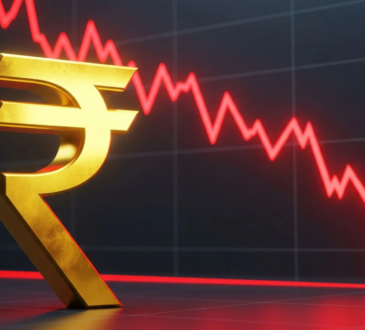
Music of momentum
Asia traders have turned tone-deaf to Eccles Building musings. Powell can lean hawkish, hint at doubt, or hedge every phrase with “data dependent,” but traders have tuned him out like static on an AM radio. The Fed may want to cool sentiment, but Asia woke up and went right back to doing what it’s done all year — buying weakness, chasing momentum, and trading optimism as an asset class.
The message from the Fed was textbook caution: yes, another 25-bp cut, but no promise of more. Yet that restraint barely rippled through futures. By the Tokyo open, the S&P 500 contracts were up 0.4%, and MSCI Asia was in the green again, powered by a clean beat from Samsung. The message was clear — the market heard Powell’s warning but chose instead to listen to its own music.
And the soundtrack right now is geopolitical détente. Trump and Xi are in Seoul, trading firm handshakes and soft smiles, lining up a deal that might pause the world’s most consequential trade fight. China’s first soybean cargoes of the season — small in volume but large in symbolism — mark a reopening of the trade spigot. The draft text floating through diplomatic circles talks of tariff rollbacks, relaxed export controls, and even a face-saving compromise on TikTok. For markets, that’s enough to declare victory.
Traders know this playbook: fade the fear, ride the optics. Powell’s hesitancy is yesterday’s tape. Today belongs to the photo-op and the whisper of a thaw. Each headline is another chip in the global risk-on casino. Sentiment isn’t reacting to data; it’s front-running hope.
Behind it all, the AI leviathan rolls on. Nvidia crossing the $5 trillion mark isn’t just a milestone; it’s a monetary event. Alphabet, Meta, and Microsoft together poured $78 billion into capital expenditure last quarter — up almost 90% year-on-year — and that’s not spending; that’s sovereignty. Corporate capex has become the new industrial policy. For Asian investors, it’s oxygen: every chip fab, every data-center permit, every fiber-optic trench feeds the same story — that tech is the market, and the market is tech.
Even the rumor of OpenAI lining up a $1 trillion IPO sends a new charge through the system. Markets no longer ask whether these valuations make sense; they simply price in the inevitability of the next higher multiple. When one megacap dips, another picks up the baton. This is no longer rotation — it’s a relay.
Meanwhile, the Fed’s internal dissent underscores just how unsure Washington has become. Miran wanted a bigger cut; Schmid wanted none. Powell, driving through a policy fog with half his dashboard dark, took the middle lane. QT ends December 1. The Fed is done pretending to shrink — the balance-sheet pause is the new stimulus. Liquidity may not be expanding, but it’s no longer retreating.
Asia senses that shift instinctively. The BoJ meets under Takaichi’s new leadership, expected to keep rates pinned at 0.5%. Japan, once defined by deflation, now has a fiscal heartbeat again. The “Takachi Renaissance” isn’t just political theater — it’s capital strategy. Tokyo is being re-engineered to be both the factory and the financier of the next era.
So as screens flicker green across the region, one truth keeps surfacing: Asia’s traders no longer wait for permission. The Fed speaks in footnotes; the market trades in forward motion. Powell can flash yellow, but investors see only green lights stretching to year-end. In this cycle, caution is background noise — and momentum is the only language anyone still hears.




